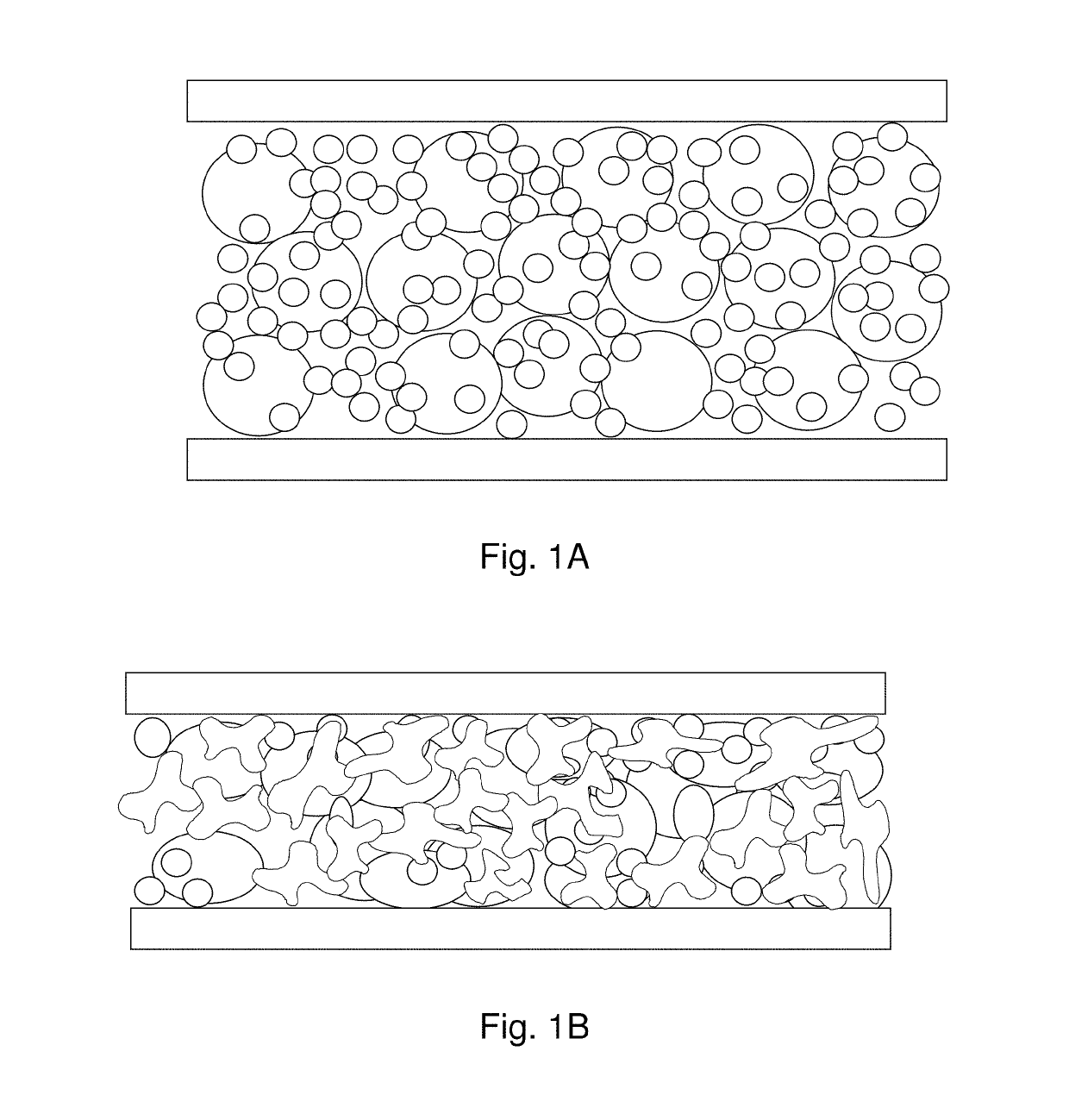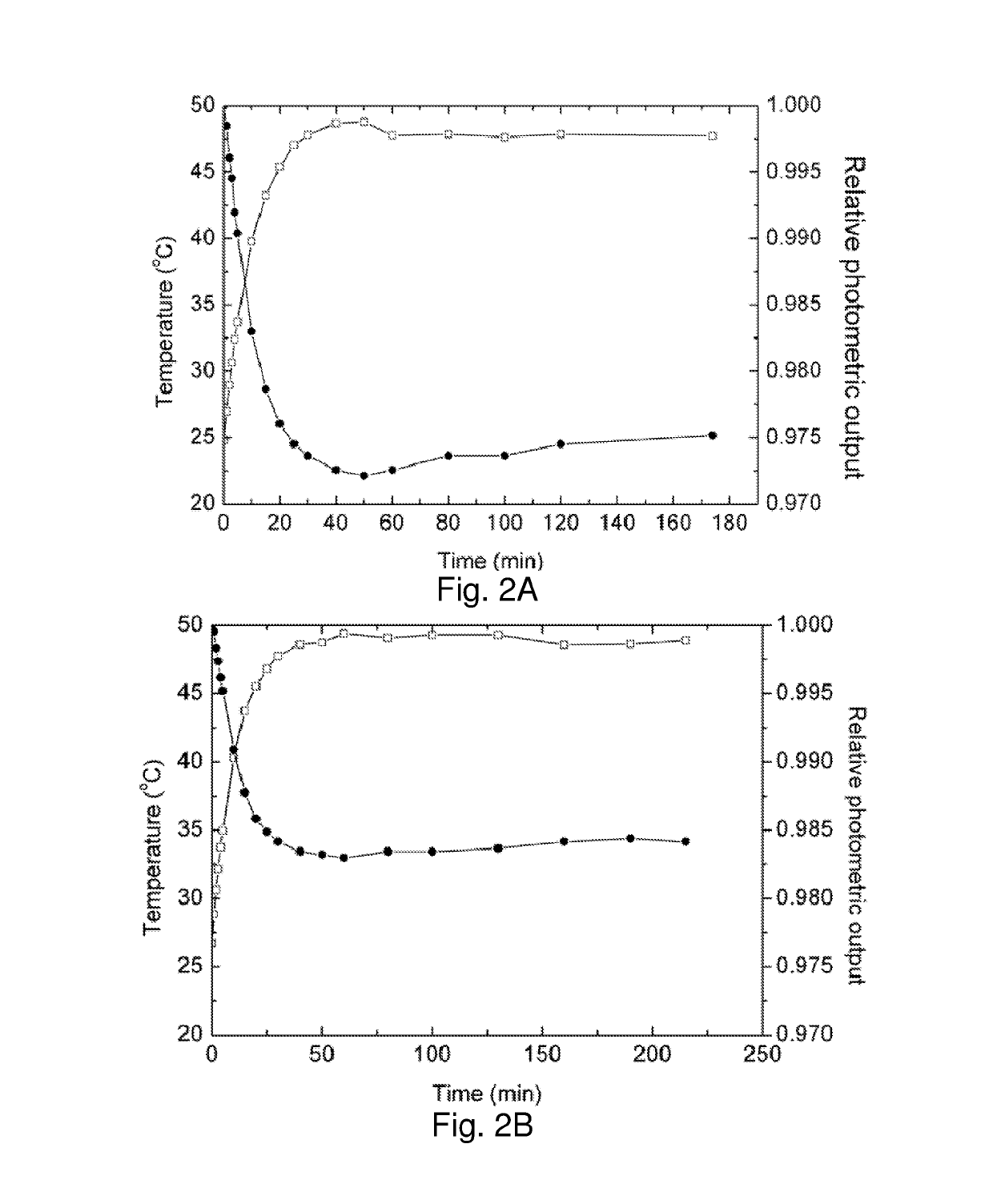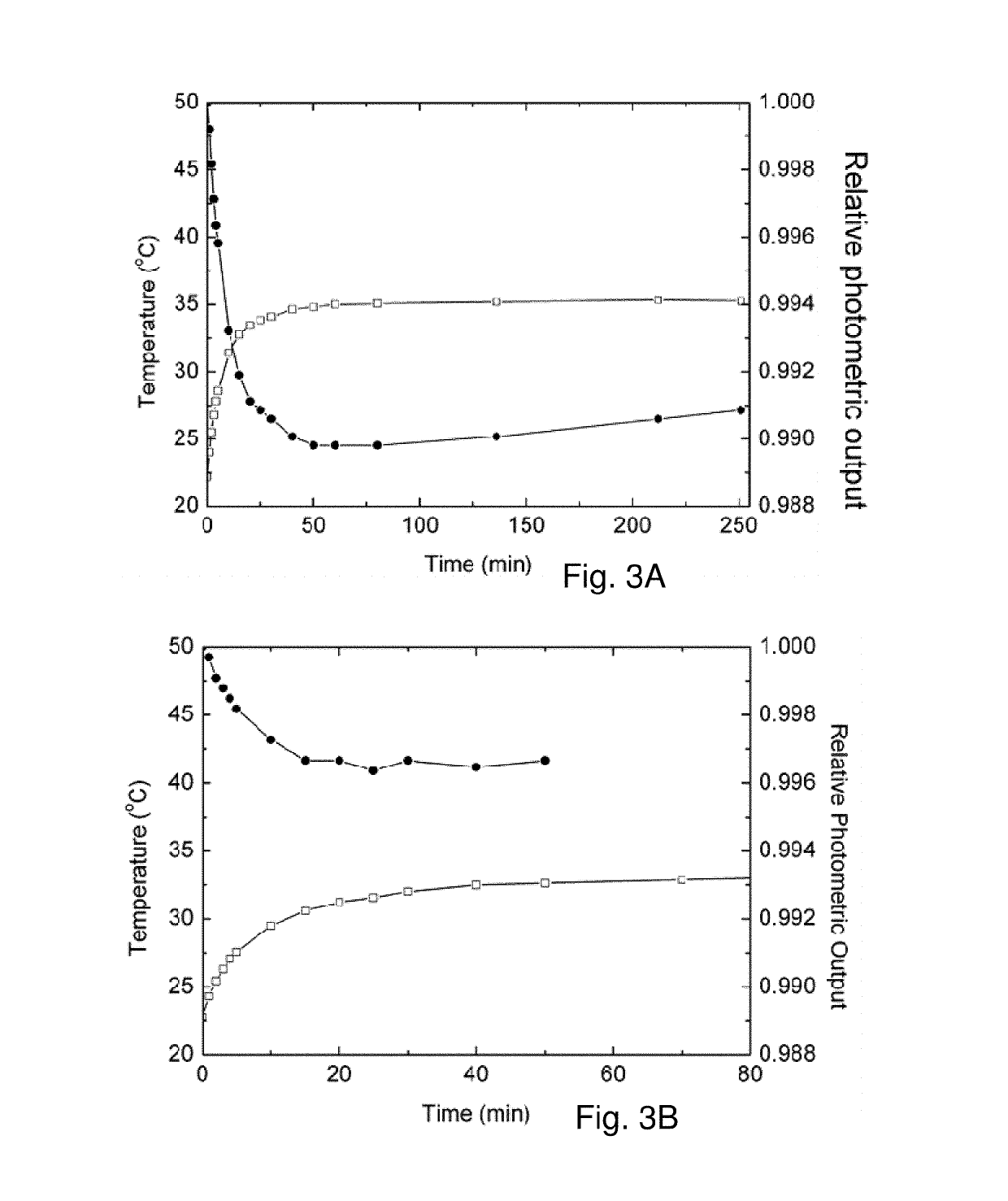Pastes for thermal, electrical and mechanical bonding
a technology of thermal, electrical and mechanical bonding, applied in the direction of metal/alloy conductors, manufacturing tools, solventing apparatus, etc., can solve the problems of insufficient mechanical properties, inability to provide continuous thermal paths across the tim, and insufficient mechanical properties, so as to achieve high electronic and mechanical performance. , the effect of high bulk thermal conductivity
- Summary
- Abstract
- Description
- Claims
- Application Information
AI Technical Summary
Benefits of technology
Problems solved by technology
Method used
Image
Examples
Embodiment Construction
[0085]FIG. 4 shows the steady state thermal gradient measurements on a microstructured nanopaste TIM showing interfacial thermal resistance of 2.4±0.2×10−6 (m2K / W) and bulk thermal conductivity of 20±1 (W / mK), for silver nanoparticles having a flake size of about 100 nm-1 μm, and a thickness of 10's of nanometers.
[0086]Tests prove the concept of Ag flake-particle combination nanopaste design and applications. For example, an LED's junction temperature has an impact on its luminescent efficiency. The test setup is shown in FIG. 1, which shows an LED array package on a heat sink, a photo detector to measure the luminescence, and a thermocouple to monitor junction temperatures. The power supply controls both the voltage and current to the 9 LED arrays, and maintains a constant power output at 7.4 W. Photo detector is fixed at a certain distance right above the LED lamp. Relative luminescence is calculated by normalizing the measured intensity to that at the initial time.
[0087]To mainta...
PUM
| Property | Measurement | Unit |
|---|---|---|
| Temperature | aaaaa | aaaaa |
| Temperature | aaaaa | aaaaa |
| Time | aaaaa | aaaaa |
Abstract
Description
Claims
Application Information
 Login to View More
Login to View More - R&D
- Intellectual Property
- Life Sciences
- Materials
- Tech Scout
- Unparalleled Data Quality
- Higher Quality Content
- 60% Fewer Hallucinations
Browse by: Latest US Patents, China's latest patents, Technical Efficacy Thesaurus, Application Domain, Technology Topic, Popular Technical Reports.
© 2025 PatSnap. All rights reserved.Legal|Privacy policy|Modern Slavery Act Transparency Statement|Sitemap|About US| Contact US: help@patsnap.com



